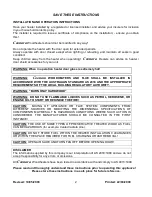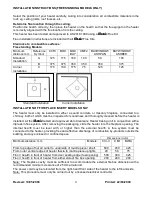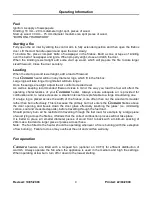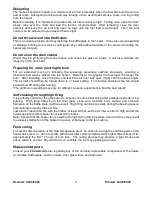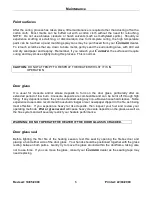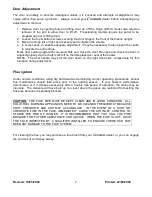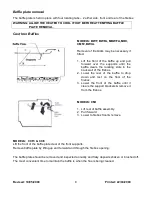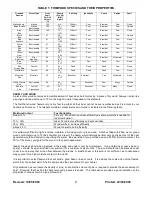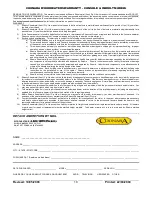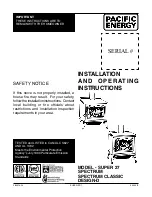
Revised: 10/05/2008
Printed: 22/04/2009
9
TABLE 1: FIREWOOD SPECIES AND THEIR PROPERTIES
Firewood
Species
Forest Type
Heat
Avail.
Per Unit
Volume
(%)
Density
(Dry Air)
Ib/ft3/
Kg/m3
Splitting
Ignitability
Coals
Sparks
Avail.
Mallee Roots
Mallee
100
N.A
Difficult
Poor
Excellent
Few
Good
Belah, Buloke
Mallee
Box-Ironbark
100
70 /
1121
Good
Poor
Excellent
Few
Limited
Grey
Box
Box-Ironbark
100
70 /
1121
Difficult
Poor
Excellent
Few
Good
Black
Box
Box-Ironbark
97
69 /
1105
Difficult
Poor
Excellent
Few
Limited
Red
Ironbark
Box-Ironbark
97
69 /
1105
Difficult
Poor
Excellent
Few
Good
Yellow
Box
Box-Ironbark
91
65 /
1041
Difficult
Poor
Excellent
Few
Good
Red
Box
Box-Ironbark
91
67 /
1073
Difficult
Poor
Excellent
Few
Good
Yellow
Gum
Box-Ironbark
90
60 /
993
Difficult
Poor
Excellent
Few
Good
River
Red Gum
River
Red Gum
80
56 /
897
Difficult
Poor
Excellent
Moderate
Good
Blue
Gum
Foothill
80
61 /
977
Fair
Fair
Good
Few
Good
Red
Stringy Bark
Foothill
72
54 /
865
Good
Good
Good
Few
Good
Messmate
Foothill
68
45 /
721
Good
Good
Good
Few
Good
Mountain
Ash
Mountain
53
42 /
673
Excellent
Excellent
Fair
Moderate
Good
White Cypress
Pine
Box-Ironbark
60
42 /
673
Good
Excellent
Poor
Many
Limited
Radiata
Pine
Foothill
Plantations
45
32 /
512
Fair
Excellent
Poor
Many
Good
KNOW YOUR WOOD
A piece of dry wood contains an incredible amount of heat when burnt correctly. A piece of dry wood, however is also like
a sponge and can absorb up to 70% of its weight in water if exposed to the elements.
The fact that all wood heaters rely on dry fuel to perform at their best, cannot be over-emphasized as it is critical to your
heater’s performance. The relevant moisture content (wetness) of wood is indicated in the following table.
Moisture Content
Fuel Suitability
Below 10%
Very dry. Wood burns but less efficiently as some moisture is needed for
ideal combustion.
10% - 18%
Ideal. Wood burns efficiently and economically
18% - 25%
Wood will burn, but less efficiently
Above 25 %
Wood too wet to burn efficiently
It is extremely difficult to light, let alone maintain, a fire using wet or green wood. A firebox filled with 20kg, wet or green
wood could contain up to 10 litres of water. As a result, the heater would naturally perform very poorly as most of the heat
generated would be directed to vaporizing the water. Be aware that if you purchase wood with 50% moisture content, the
50% of the money you paid for the wood, in fact, purchased water.
Ideally, firewood should be organised in the spring and under cover by mid-autumn. If you obtain next year’s wood in
spring, it should be open air dried over summer for a minimum of six months. The wood should then be stacked under
cover in such a way that air can flow between the pieces. A plastic sheet or tarpaulin is not sufficient as condensation
may account for a high moisture content in the wood.
It is important to select firewood that will build a good base or bed of coals. It is actually the coals and not the flames,
which form the hottest part of the fire and provide the heat source for your heater.
Dry hardwood has over twice the density of pine, so double the volume of pine is required to provide the same amount of
heat. Firewood that has had the bark removed produces less ash. The table above provides a good indication of the
properties of various common type of firewood.


